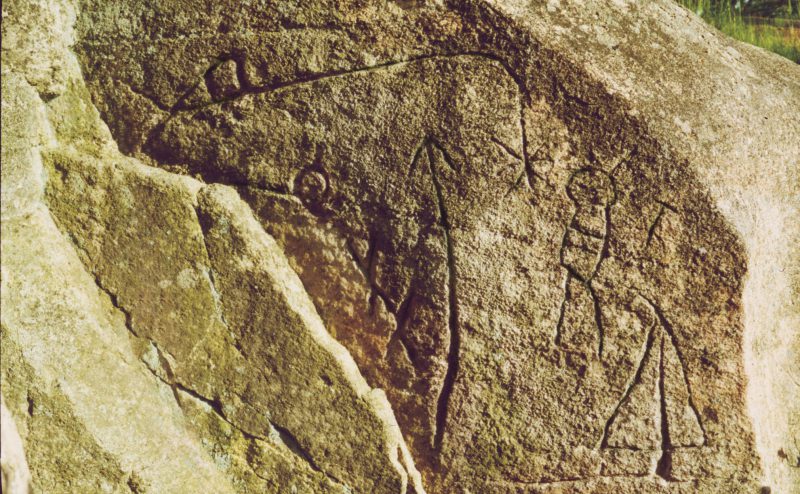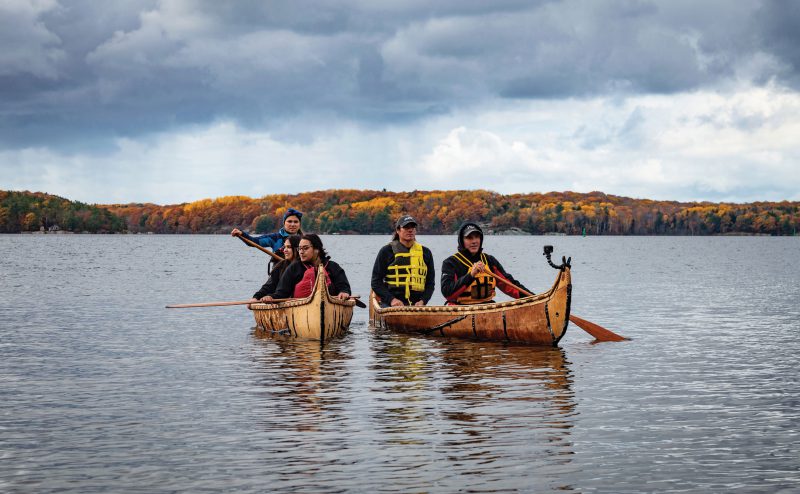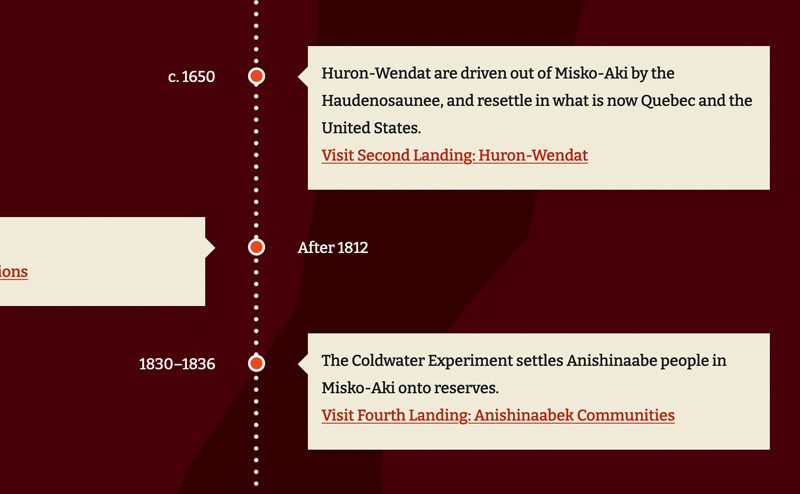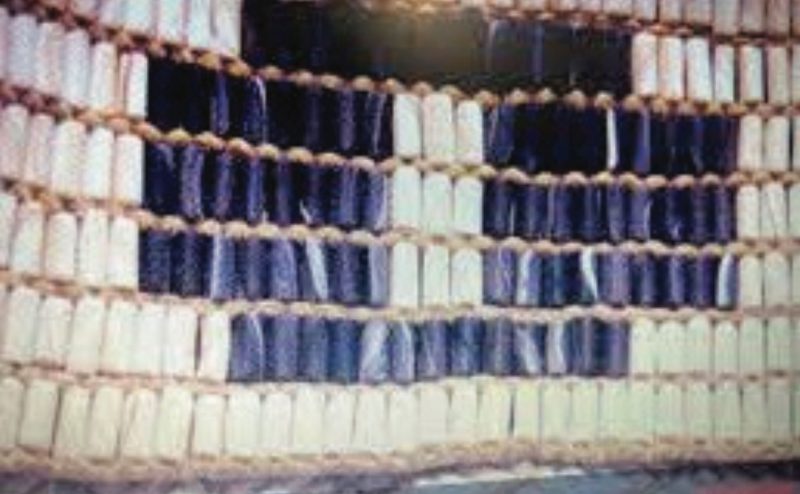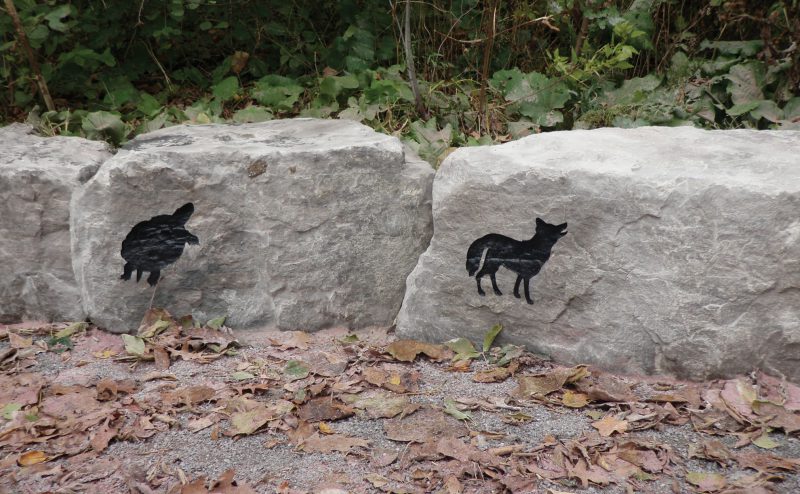Hardy Lake. PHOTO BY ROBERT SNACHE
WELCOME/ORIENTATION
Honouring Those Who Came Before
What You’ll Learn in this Section
The Dish With One Spoon is a concept that represents the sharing of nature’s abundance of foods and resources. A treaty was made between the Indigenous nations of southern Ontario and upstate New York to share the bounty of this land. It was agreed that they would not fight over territory or natural resources but would all derive a common benefit from what the “dish” (nature) provides.
Indigenous peoples are the original inhabitants who have lived in the Muskoka region for thousands of years. The Mnjikaning Fish Weirs themselves are evidence of this as they are one of the oldest human developments in North America. It is believed they were built some 5,000 years ago by the Indigenous peoples of this area. More evidence comes from the spear point in the Misko Aki exhibit which dates back to around 4,000 years ago and was found on the shore of Little Lake near Port Severn. It was made on Collingwood chert (Fossil Hill formation), which outcrops around Collingwood.
Learning more about the First Nations of Misko-Aki clans shows how the clans were inspired by and derived from empathic connections to other lifeforms within the territory. As clan members, they have a common ancestor and a shared name or animal symbol. Connections with nature became part of the identity of the people and these associations helped nurture the empathic relations of families to other living creatures. By examining these cultural associations, we can learn much about the connections Indigenous people of the area developed with nature.
Yiheh
HURON-WENDAT
Aanii
ANISHINAABEK
Taanishi
MICHIF
Shé:kon
MOHAWK
Bienvenue
FRENCH
Welcome
ENGLISH
For over 13,000 years, Indigenous peoples have been living in this region. A sacred relationship was formed with all of Creation. The first people were given instructions and responsibilities about how to harmonize with the flow of nature.
The colonizing fur trade upset that natural balance and forced Indigenous nations to actively compete in harvesting a livelihood from the land. The beaver that was once plentiful, almost disappeared; the fish have become endangered because of pollution. Tourism and industry have resulted in the loss of many trees. Despite these changes, Indigenous peoples have endured.
This exhibition is a journey across the vast Muskoka landscape, with stopovers at special places to view the land through Indigenous eyes. It is also a journey though time so you can see the changes to the landscape and learn how Indigenous peoples continue to be present in this special place called Misko-Aki, the Red Earth.
Many footprints were here before ours.
Many canoes travelled the waterways. Many council fires were kindled before today. This region was, and continues to be, culturally, ecologically, economically and spiritually significant to the Anishinaabek, Huron- Wendat, Haudenosaunee, and Métis peoples who have deep connections to the landscape, to the plants, animals, birds and water creatures that share this beautiful place.
In that spirit, we acknowledge the ongoing significance of Misko-Aki as a place where the confluence of cultures made history and are still present today.
The term Anishinaabek includes Ojibway, Potawatomi, Odawa, Chippewa, and Algonquin peoples.
Haudenosaunee means “People of the long house,” and this Confederacy is made up of the Mohawk, Oneida, Onondaga, Cayuga, Seneca, and Tuscarora Nations.
Explore Misko-Aki
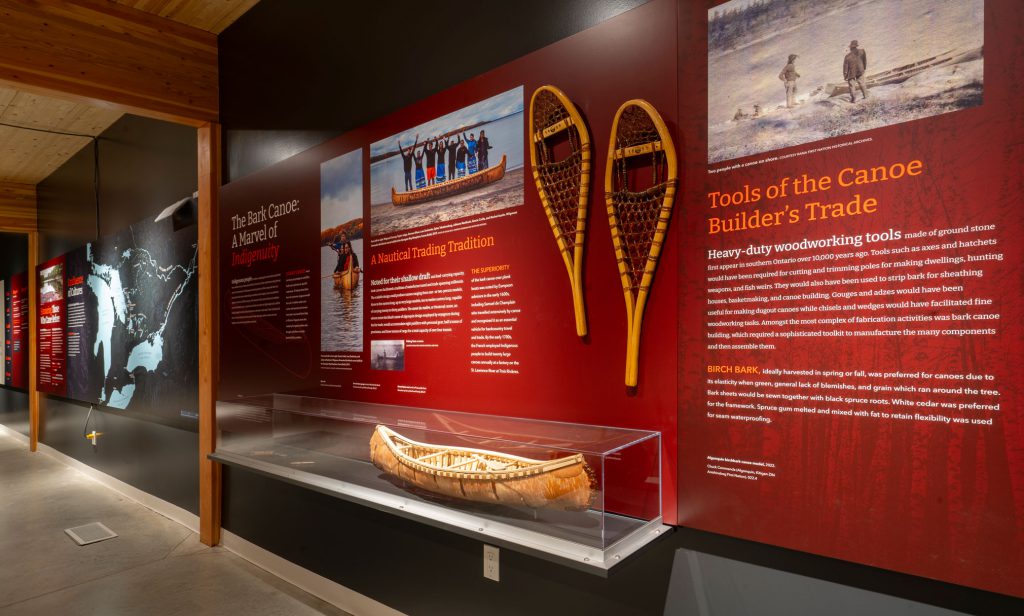
Are You Ready to Experience Misko-Aki in Person?
Visit the Muskoka Discovery Centre to explore Misko-Aki as well as our many other immersive exhibits, programs and activites.
Purchase Tickets